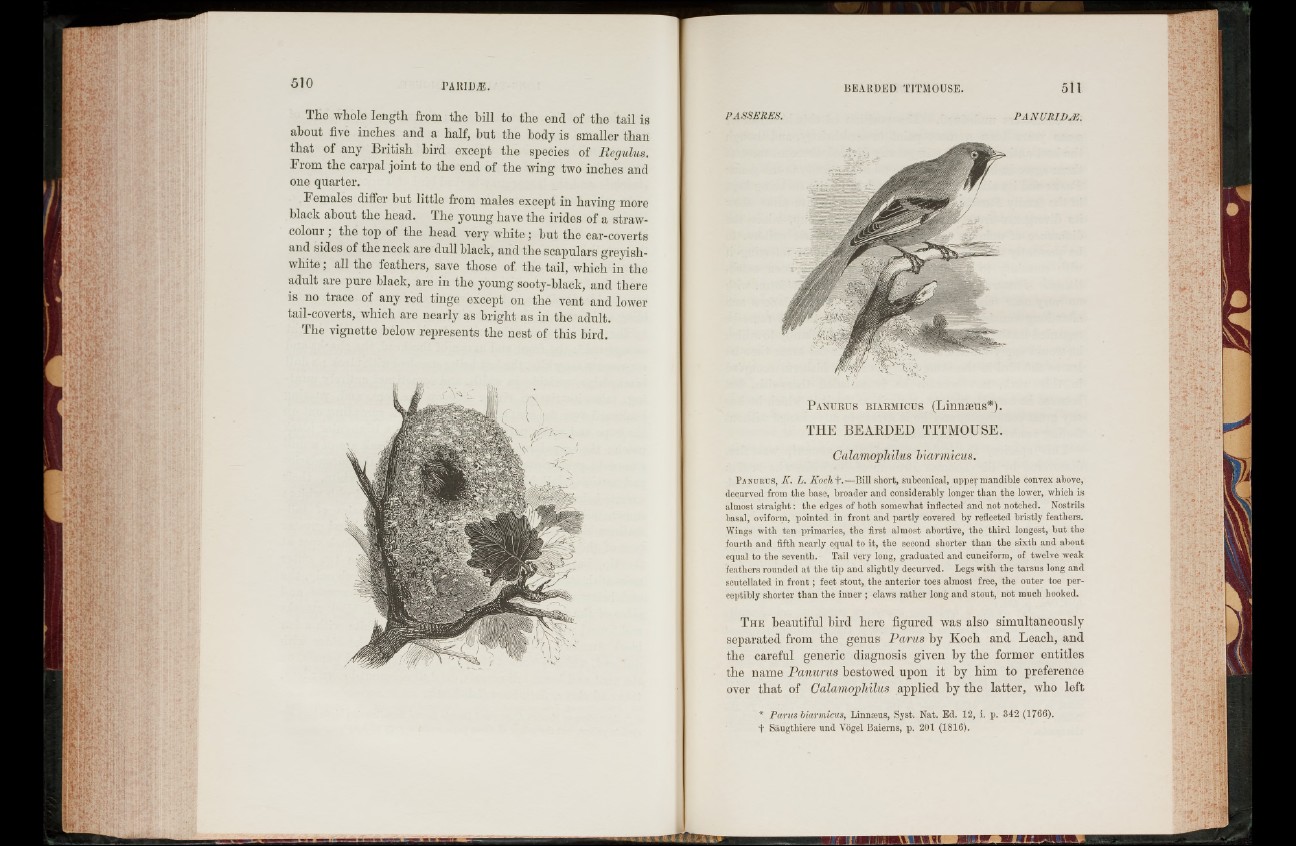
The whole length from the bill to the end of the tail is
about five inches and a half, but the body is smaller than
that of any British bird except the species of Regulus.
From the carpal joint to the end of the wing two inches and
one quarter.
Females differ but little from males except in having more
black about the head. The young have the irides of a straw-
colour ; the top of the head very white; but the ear-coverts
and sides of the neck are dull black, and the scapulars greyisli-
wliite ; all the feathers, save those of the tail, which in the
adult are pure black, are in the young sooty-black, and there
is no trace of any red tinge except on the vent and lower
tail-coverts, which are nearly as bright as in the adult.
The vignette below represents the nest of this bird.
PASSERES. P A N UR! DM.
P a n u r u s b ia rm ic u s (Linnieus*).
THE BEARDED TITMOUSE.
Calamophilus Vuirmicus.
P a n u r u s , K. L. K o c h f.—B il l short, subcorneal, upper mandible convex above,
decurved from the base, broader and considerably longer than the lower, which is
almost straight: the edges of both somewhat inflected and not notched. Nostrils
basal, oviform, pointed in front and partly covered by reflected bristly feathers.
Wings with ten primaries, the first almost abortive, the third longest, but the
fourth and fifth nearly equal to it, the second shorter than the sixth and about
equal to the seventh. Tail very long, graduated and cuneiform, of twelve weak
feathers rounded at the tip and slightly decurved. Legs with the tarsus long and
scutellated in fro n t; feet stout, the anterior toes almost free, the outer toe perceptibly
shorter than the inner ; claws rather long and stout, not much hooked.
T h e beautiful bird bere figured was also simultaneously
separated from the genus Parus by Koch and Leach, and
the careful generic diagnosis given by the former entitles
the name Panurus bestowed upon it by him to preference
over that of Calamophilus applied by the latter, who left
* Parus biarmicus, Linnaeus, Syst. Nat. Ed. 12, i. p. 342 (1766).
+ Saugthiere und Vogel Baierns, p. 201 (1816).